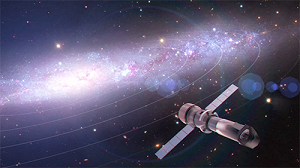Since 2012, an enormous cloud is floating high above the South Pole of Titan, a large moon of Saturn. Astronomers have now discovered that this cloud consists of extremely toxic hydrogen cyanide ice. The ice has probably formed after a rapid cooling of the atmosphere. The results have this week been published in Nature. On …
Smell, see and hear the universe
Altijd al willen weten hoe ruimte-instrumenten er uitzien en hoe deze worden gemaakt? Kom op 5 oktober in Utrecht of Groningen naar de Open Dag van ruimteonderzoeksinstituut SRON en dompel je onder in de wereld van het ruimteonderzoek. SRON is te bezoeken tussen 12.00 en 17.00 uur. SRON is het nationale expertise-instituut voor ruimteonderzoek in …
First Dutch contribution to giant telescope E-ELT passes all tests
De eerste Nederlandse bijdrage aan de toekomstige European Extremely Large Telescope (E-ELT) is succesvol getest. Het gaat om de ‘chopper’, een zeer wendbaar spiegeltje dat is ontwikkeld door een samenwerkingsverband van universiteiten, technologische instituten en het bedrijfsleven. Het high tech spiegeltje is een essentieel onderdeel van METIS, de mid-infraroodcamera annex spectrograaf van de reuzentelescoop. The …
Thermonuclear X-ray bursts on neutron stars set speed record
A new study of thermonuclear X-ray bursts on neutron stars reveals that, on very rare occasions, shells can be expelled at relativistic speeds – up to 30% of the speed of light. These velocities are the highest ever measured for a cosmic thermonuclear event, including novae and thermonuclear supernovae. This phenomenon, discovered in only 0.1 …
Chandra and LETG celebrate 15th anniversary
Fifteen years ago, NASA’s Chandra X-ray Observatory was launched into space aboard the Space Shuttle Columbia. Since its deployment on July 23, 1999, Chandra has helped revolutionize our understanding of the universe through its unrivalled X-ray vision. SRON provided the Low Energy Transmission Grating (LETG) for Chandra in collaboration with the Max Planck Institut für …
Jelle Kaastra appointed honorary professor at Leiden University
SRON-onderzoeker Jelle Kaastra is met terugwerkende kracht per 1 april 2014 benoemd tot onbezoldigd hoogleraar aan de Universiteit Leiden. Hij zal daar werkzaam zijn op het gebied van de hoge-energieastrofysica. Jelle Kaastra Kaastra zal een dag per week werkzaam zijn in Leiden, waar hij colleges in de hoge-energieastrofysica gaat geven, promovendi gaat begeleiden en de …
Herschel-HIFI solve meteorite mystery
Astronomen, onder wie Carsten Dominik van de Universiteit van Amsterdam, hebben een mogelijke verklaring gevonden voor de aanwezigheid van een bepaald chemisch element in meteorieten. Ze ontdekten met ESA’s Herschel Ruimtetelescoop een stervormingsbied waarin compleet andere chemische verhoudingen heersen dan in elke andere embryonale ster die tot nu toe is bestudeerd. De vermoedelijke oorzaak daarvan, …
Selection X-ray telescope good news for the Netherlands
De Europese ruimtevaartorganisatie ESA heeft eind vorige week definitief gekozen voor Athena, een grote röntgentelescoop die zeer hete en energierijke verschijnselen in het heelal gaat bestuderen. Heel goed nieuws voor het Nederlandse ruimteonderzoek en het nationale bedrijfsleven, want er is veel ruimte voor Nederlandse ruimtetechnologie in de telescoop. Ook wetenschappelijk gezien zit Nederland op de …
Swiftly moving gas streamer eclipses supermassive black hole
An international team of astronomers has discovered that the supermassive black hole at the heart of the galaxy NGC 5548 has recently undergone strange, unexpected behavior rarely seen in the heart of active galaxies. The researchers detected a clumpy gas stream flowing quickly outward and blocking 90 percent of the X-rays emitted by the supermassive …
Space detector confirms new frequency comb
Over the years SRON has developed superconducting detectors for astronomical missions, including NASA balloon observatories and space telescopes. Now this type of detector – more specifically a Hot Electron Bolometer Mixer – has found its way to other scientific disciplines. The detector now plays a crucial role in the development of terahertz frequency combs based …












